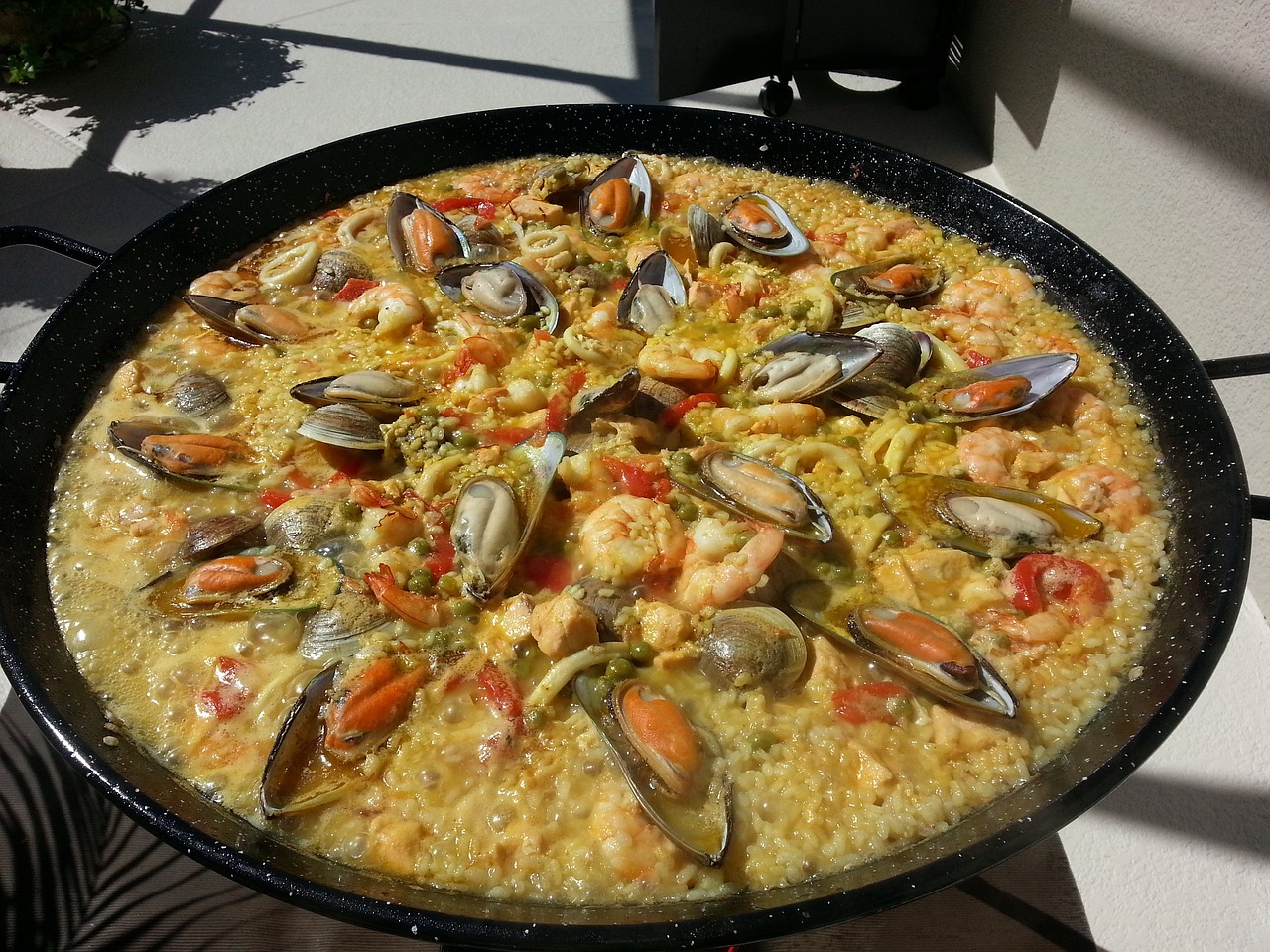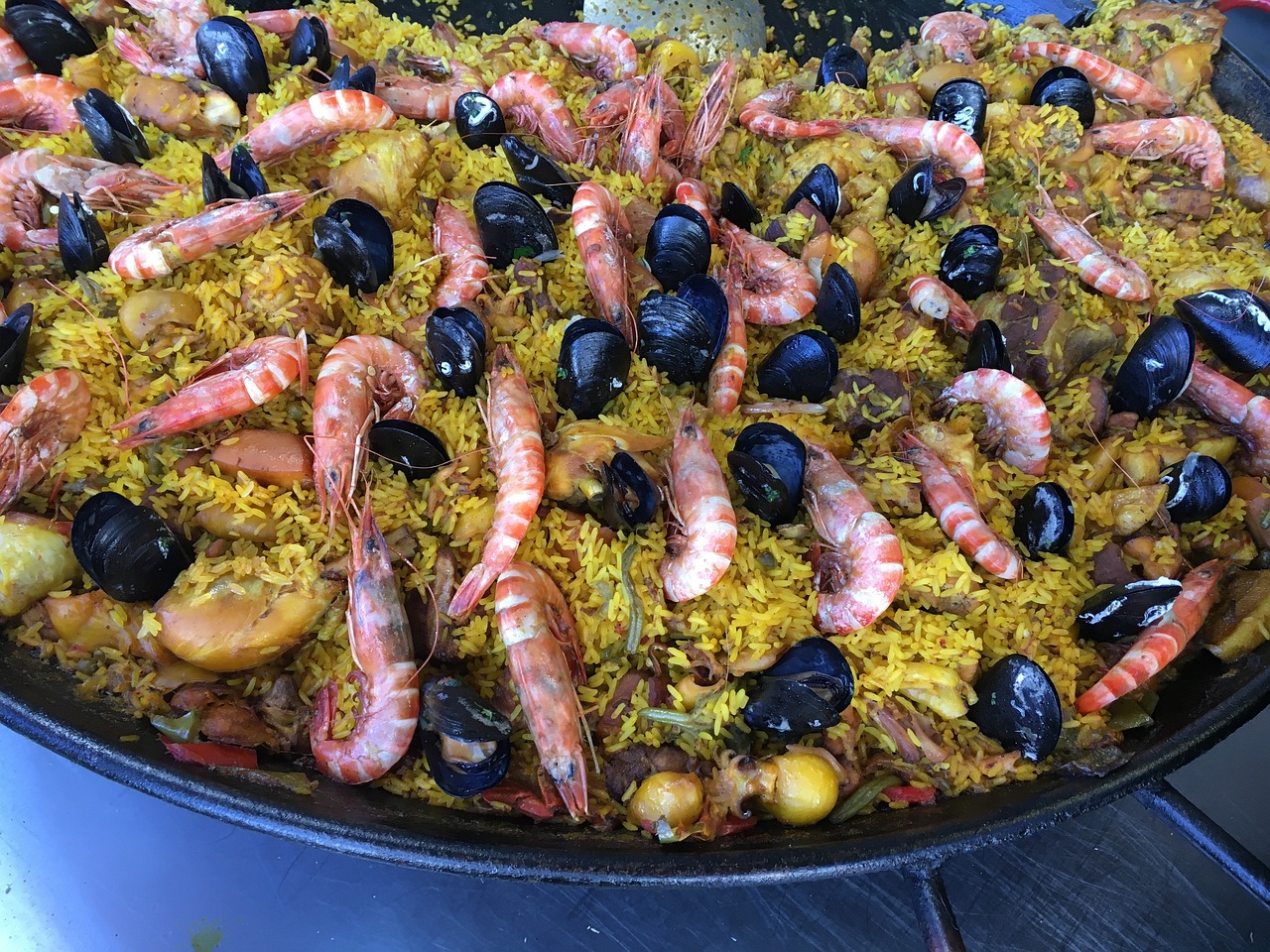Spanish Seafood Paella Valenciana Recipe

Are you ready to embark on a culinary journey to Spain with the delightful Seafood Paella Valenciana? This traditional dish is a explosion of flavors that will surprise your taste buds and transport you to the vibrant streets of Valencia. Let's dive into the history, ingredients, and preparation of this iconic Spanish recipe to create an authentic dining experience right in your own kitchen.
Originating from the picturesque region of Valencia, Paella Valenciana holds a special place in Spanish culinary heritage. Its roots date back to the fields where farmers would cook rice with whatever ingredients they had on hand. Over time, this humble dish evolved into the beloved Seafood Paella Valenciana we know today, symbolizing community and celebration.
When it comes to the key ingredients of Seafood Paella Valenciana, each component plays a crucial role in defining its rich and savory taste. From the vibrant saffron-infused rice that gives the dish its signature golden hue to a medley of fresh seafood like shrimp, mussels, and squid, every element contributes to the explosion of flavors in every bite.
To master the art of preparing Seafood Paella Valenciana, you must understand the traditional cooking technique that sets this dish apart. Starting with the aromatic sofrito made from onions, garlic, and tomatoes, to carefully layering the ingredients in the pan and allowing the rice to absorb the flavorful broth, each step is essential in creating a perfect balance of textures and tastes.
When it comes to serving and presenting your Seafood Paella Valenciana, attention to detail is key to elevating the dining experience. Garnish your paella with fresh herbs like parsley and lemon wedges for a pop of color and freshness. Pair it with a crisp Spanish white wine and serve alongside traditional accompaniments such as aioli or a simple green salad to complement the robust flavors of the dish.
Origin of Paella Valenciana
The origin of Paella Valenciana can be traced back to the beautiful region of Valencia in Spain, where it holds a special place in the hearts of locals and visitors alike. This iconic dish has a history as vibrant and colorful as its ingredients, reflecting the rich culinary heritage of Spain.
Legend has it that the word "paella" itself comes from the Old French term for pan, "paelle," which evolved into the Spanish "paella." The dish was traditionally cooked by farm laborers over an open fire in a wide, shallow pan, known as a "paellera," making it a practical and communal meal.
Originally, Paella Valenciana was a humble peasant dish made with readily available ingredients such as rice, vegetables, and rabbit or chicken. Over time, as trade and exploration expanded, the recipe evolved to include a variety of ingredients, including the addition of seafood along the coastal regions.
The blending of cultures and flavors in Spain's history also influenced the development of Paella Valenciana. The Moors introduced rice cultivation to the region, while the Romans brought saffron, a key spice in the dish. These influences, combined with local ingredients, created the unique and delicious flavor profile that defines Paella Valenciana today.
Key Ingredients
When it comes to creating an authentic Seafood Paella Valenciana, the key lies in selecting the right ingredients that truly capture the essence of this traditional Spanish dish. Let's delve into the essential components that contribute to the rich and flavorful profile of Paella Valenciana:
- Bomba Rice: This short-grain rice variety, known for its ability to absorb flavors while maintaining a firm texture, is fundamental to the success of a delicious paella.
- Saffron: Often referred to as "red gold," saffron infuses the dish with its distinct aroma and vibrant color, elevating the overall sensory experience.
- Seafood: A medley of fresh seafood such as shrimp, mussels, clams, and squid adds a delightful oceanic essence to the paella, creating a harmonious blend of flavors.
- Tomatoes: Ripe, juicy tomatoes are used to create the flavorful sofrito base, enhancing the overall richness of the dish.
- Spanish Paprika: This smoky and slightly spicy seasoning adds depth and complexity to the dish, infusing it with a unique Spanish flair.
- Garlic and Onion: These aromatic ingredients form the foundation of the flavor profile, providing a savory base for the dish.
- Olive Oil: High-quality Spanish olive oil is essential for sautéing the ingredients and imparting a subtle fruity note to the paella.
- Peas and Bell Peppers: These colorful vegetables not only add visual appeal to the dish but also contribute a hint of sweetness and crunch.
Each of these ingredients plays a crucial role in creating the symphony of flavors that define Seafood Paella Valenciana. The careful selection and meticulous preparation of these key components are essential for achieving an authentic and mouthwatering paella that will transport your taste buds to the sunny shores of Spain.
Cooking Technique
When it comes to mastering the art of cooking Seafood Paella Valenciana, the technique is key to achieving that perfect balance of flavors and textures. The process begins with creating the flavorful base known as sofrito, a mixture of onions, garlic, tomatoes, and bell peppers sautéed in olive oil. This aromatic foundation sets the stage for the rest of the dish, infusing each grain of rice with rich, savory flavors.
Next, the star ingredient of any paella, the rice, is added to the sofrito and toasted slightly to enhance its nutty flavor. The secret to achieving the vibrant yellow hue of Seafood Paella Valenciana lies in the addition of saffron-infused broth, which not only colors the rice but also imparts a subtle floral aroma.
As the rice simmers and absorbs the flavorful broth, a variety of fresh seafood such as shrimp, mussels, and clams are delicately arranged on top. This careful placement allows the seafood to cook gently in the steam rising from the bubbling rice, ensuring that each piece remains tender and succulent.
To achieve the coveted socarrat, the crispy layer of rice that forms at the bottom of the pan, it is crucial to increase the heat towards the end of the cooking process. This caramelization adds a delightful crunch to the dish, providing a textural contrast to the tender rice and plump seafood.
Finally, once the Seafood Paella Valenciana is cooked to perfection, it is essential to let it rest for a few minutes before serving. This allows the flavors to meld together and ensures that each spoonful is packed with the essence of the Mediterranean sea.
Serving and Presentation
When it comes to serving and presenting your Seafood Paella Valenciana, attention to detail can elevate the dining experience to a whole new level. The visual appeal of the dish is just as important as its delicious flavors. Let's dive into some tips and tricks to ensure your paella looks as good as it tastes.
First and foremost, the vessel in which you serve your paella can make a significant difference. Opt for a traditional paellera, a wide and shallow pan specifically designed for cooking and serving paella. The wide surface area allows for the coveted socarrat, the crispy layer of rice at the bottom of the pan, to shine through and adds to the overall presentation.
When it comes to garnishing your Seafood Paella Valenciana, keep it simple yet elegant. A few lemon wedges or slices of fresh lemon can add a pop of color and brightness to the dish. Sprinkling freshly chopped parsley over the top not only enhances the visual appeal but also adds a touch of freshness.
For serving suggestions, consider offering a side of alioli, a garlic-infused mayonnaise that pairs perfectly with the flavors of the paella. Additionally, a crisp green salad dressed with a light vinaigrette can serve as a refreshing accompaniment to the rich and savory paella.
To truly impress your guests, consider incorporating some traditional Spanish elements into the presentation. Serve the Seafood Paella Valenciana with a side of pan con tomate, toasted bread rubbed with garlic and fresh tomatoes, for an authentic touch. You can also pair the dish with a glass of sangria or tinto de verano to complete the Spanish culinary experience.
Remember, presentation is key when it comes to serving Seafood Paella Valenciana. Take the time to arrange the seafood, vegetables, and rice artfully in the paellera before serving. A visually appealing dish not only stimulates the appetite but also shows your dedication to creating an authentic and memorable dining experience.



 HazalVardal
HazalVardal 





